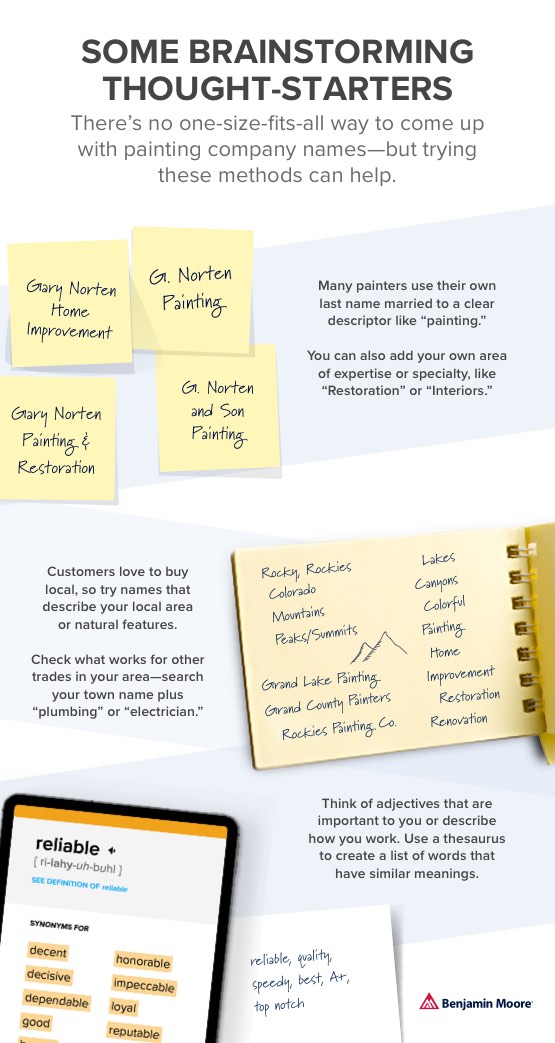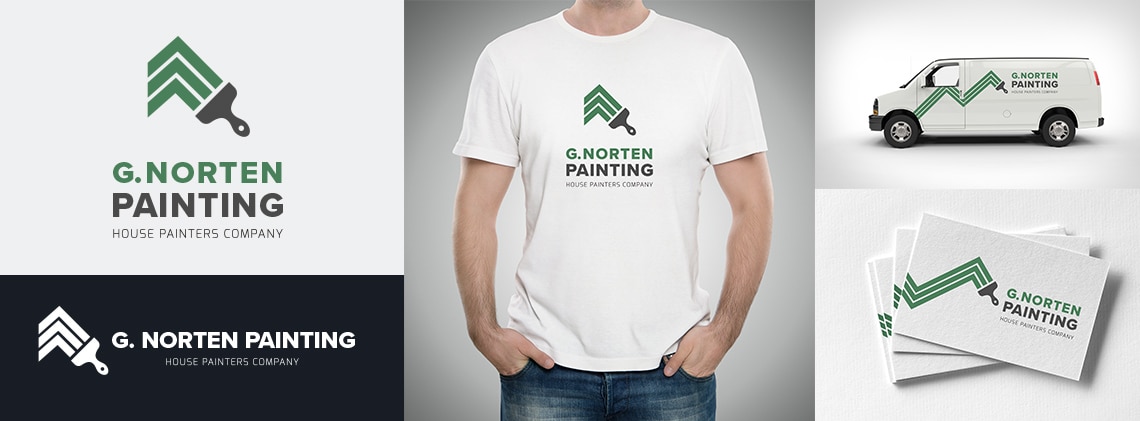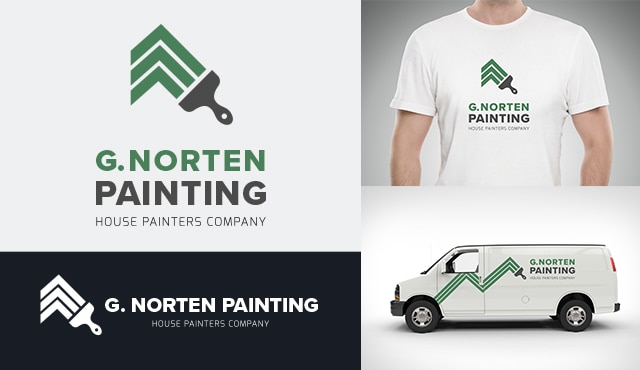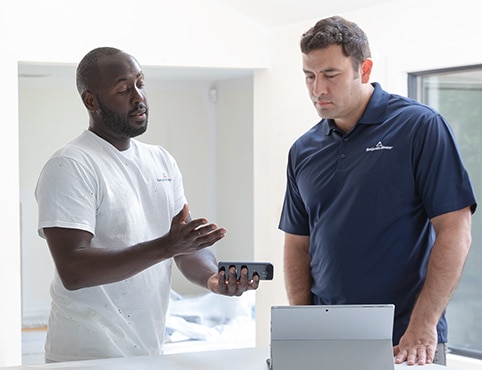- Tony Severino, owner of Professional Painters
HOW TO NAME YOUR PAINTING COMPANY
Choosing a painting company name means more than just putting your own name on a yard sign. The right name needs to be memorable, different and enduring—and something you won’t have to spend time and money redoing later. We’ll help you get started.

1. Understand Your Business
Your business will need to occupy its own space in the market to be successful in the long run, so before you get started, it’s worth taking a little bit of time to think about the answers to a few key questions:- What competition is already out there in your local market?
- How can you differentiate yourself from that competition?
- What do you want your company to be in the future—will you always focus only on painting?
Be sure to search online, especially in your local area, to make sure you’re aware of important competition, and how they are naming and describing their business on their website.
“When we began our company in 2004, we were amazed at how uncreative painting companies were when it came to their own names,” explains Bruce Watson, co-founder of Jalapeno Paint Werx of Naperville, Illinois. “How can anyone remember who they hired? That’s why we chose ‘Jalapeno,’ to say we were the area’s hottest painting company. And you’ll be able to remember who we are!”
Take a clear and honest look at yourself as a painter and what you hope to offer your customers as a small-business owner: What can you deliver that others can’t (or at least, can’t do as well), both in the short term and down the road as you grow? The answers to these questions may not feel like they’re providing you with creative ideas for painting company names right away, but that’s okay—they’ll provide important guardrails and ideas to guide your brainstorming.
2. Start Brainstorming Names
Now it’s time to start the fun part of the process: coming up with ideas for painting company names. Brainstorming can happen in different ways—formal or informal, on your own or with family, friends or colleagues, in a conversation or a more organized setting. The key point is to try out different methods to find what works best for you.Regardless of how you tackle it, start by grabbing your laptop, a big sheet of paper, or a stack of sticky notes to make sure you capture all of the ideas. You should keep a thesaurus (or thesaurus.com) handy to regularly explore other words with the same meaning. Remember that no idea is a bad idea at this point in the process—you want to collect as many suggestions as possible.

A Few Thought-Starters for Painting Business Names
If you hit a roadblock, here are a few frequently used angles that can add new fuel to your creative spark:- Local flair: People love to hire local, especially when it comes to work on their home. If your company is based in Grand Lake, Colorado, for instance, you could consider names like Grand Lake Painting, Grand County Painters, or Rockies Painting Company.
- Your own name: Putting your family’s name on what you do shows you stand by your work. If your name was Gary Norten, you could consider Norten Painting, Norten and Son Painting, Norten Residential Painting, Gary Norten Painting & Restoration, etc.
- Differentiating adjectives: Words that speak to high quality and friendly customer service do well. Some options include Reliable, Professional, Superior, Caliber, or Perfect. Think about words that are important to you.
- Area of expertise: “Painting” or “painters” is a good start, but you may want to add your own specialty, like “Restoration” or “Interiors.”
- What works elsewhere: Do an online search for names that have been proven to work for others but won’t compete with yours—try searching your town name with other trades like “plumbing” or “electrician.”
3. Evaluate Your Options
Got a long list of potential names? Now it’s time to start narrowing it down. Just be sure to save the full list somewhere before you start deleting options, in case you ever need to refer back to it.Start by writing and then sounding the names out, then asking yourself a few key questions about each one:
- Is the name simple to understand?
- Is the name memorable?
- Does it feel different than what's out there?
- Does the name represent what you want to stand for as a painter and small-business owner?
- Is the name easy to pronounce, especially if it’s a family name rather than common words? (You want to make sure that it won’t be mispronounced in a way that sounds silly or inappropriate.)
- Does the name work when translated into Spanish, French, or any other languages that are common in the local community?
- It is a generic name, or could it be owned or even trademarked?
- Is it too long?
"Your name should be short, easy to pronounce, and say what you do. Keep it simple."
Things to Consider
There aren't hard and fast reasons to rule out a potential name, but there are several things to keep in mind such as:- If you used a name that references your local area, does it give you too narrow a geographical range to get work?
- If your own name is on your van, will customers expect to always see you on the jobsite, making delegating more difficult as you grow?
- Does a narrow descriptor like “restoration” or “interior” limit how customers evaluate you and prevent you from being hired for work you’re qualified to do?
- Are any of the words you’ve chosen potentially inappropriate or offensive?
Will Your Name Work Online?
Now take your narrowed-down list and start exploring potential URLs that use your company name. Don’t tear up your favorite options if your perfect dot-com address is already being used by another company. This just means that you’ll need to spend a little extra time thinking of how to create a unique web address from your name, such as adding “painting,” “painters,” or other descriptive words to the web address.For instance, if your company name was “Gary Norten Painting,” you could try a series of different options like:
- GaryNortenPainting.com
- GaryNortenPainters.com
- NortenPainting.com
- GaryNortenPaints.com
- GaryNortenPainting.biz
- GaryNortenandSons.com
- NortenPaintingRestoration.com
Now is also a good time to check potential social media handles for your new business, particularly on Facebook and Instagram where the visual formats lend themselves particularly well to promoting painting businesses.
5. Test Out Your Painting Business Names
Once you’ve got a pared-down list of painting company names that you know will work from a business standpoint, you want to spend a little bit of time focusing on what names truly resonate with your potential audience.Start with an informal focus group of family, friends, and neighbors (since they’re most likely to offer you free help), but encourage them to be as open and honest as they can—these are people who likely will be reluctant to be negative for fear of hurting your feelings, so expect them to honestly praise the names they like but not necessary give their full opinion about names they dislike. You should try to broaden your focus group to include other painters as well, as they will be able to give a more informed perspective on what painting company name ideas are the most memorable, inspire confidence, and are likely to be hired. They may also have new ideas to offer.
Online services like SurveyMonkey can also help you create a focus group audience, which you can reach via email, to provide you with data on your name ideas—it’s free to use with email addresses you provide, but if you want to reach a wider audience, there’s a fee determined by that reach.
6. Start Designing a Logo
You’ve hopefully narrowed down your list now to just a handful of main contenders—now it’s time to think about how it will look in your marketing. Your name won’t only be spread by word of mouth and URL—it will also need to be a logo on letterhead, business cards, yard signs, website headers or ads, T-shirts, the sides of a van, etc.

Make sure now that the name you choose can be easily, distinctively, and consistently rendered in a simple logo.
A few questions to ask yourself:
- Is it short enough to be legible in sizes that range from a business card to a van?
- Will it pop visually in all of these places?
- Does it work on a variety of backgrounds, in color and in black and white?
You don’t have to have a fully baked logo to start your business, but it’s important to think through these things now. If you’re struggling to come up with a distinctive look, there are online resources such as Canva and VistaPrint that can help you quickly design some different options for free.
7. Make It Official
Once you’ve settled on a name that you love that has passed all of these tests, it’s time to make it official. You’ll need to register your new business name with your state, either through your state’s Secretary of State Office or by using the services of a company like LegalZoom as the first legal step to starting your own small business. You can also look into filing for a trademark of your company name. When you’re ready to take the next steps, we have a full guide on how to start your own painting business.Trust Your Instincts
Most of all, have confidence in your process. “I walked into the print shop for my first set of business cards, 19 years old, trying to decide between Precision and Professional Painters—it was a coin flip and Professional Painters won,” remembers founder Tony Severino. “Years later, a client told me he’d saved money before using the cheap guy, but now he wanted it done the ‘Professional’ way—who knew that would come from the name I chose? My point is your name should be short, easy to pronounce, and say what you do. Keep it simple.” And don’t forget to have fun!An important thing to remember: If all else fails and you’re still truly stumped trying to do this yourself, there are, of course, companies out there who specialize in helping small businesses with their branding and naming (for a fee).
Looking for more business info?
Get the tools and advice you need to succeed as a business owner in the painting industry today.View Categories
Twitter Logo
Follow @BenMoorePro for content created specifically for professionals.






